On View
Artist Ragnar Kjartansson Shows Us His Beloved Porcupines and Other Favorite Works at the Metropolitan Museum of Art
His latest show, now on view at the Met, is inspired by a work in its collection.
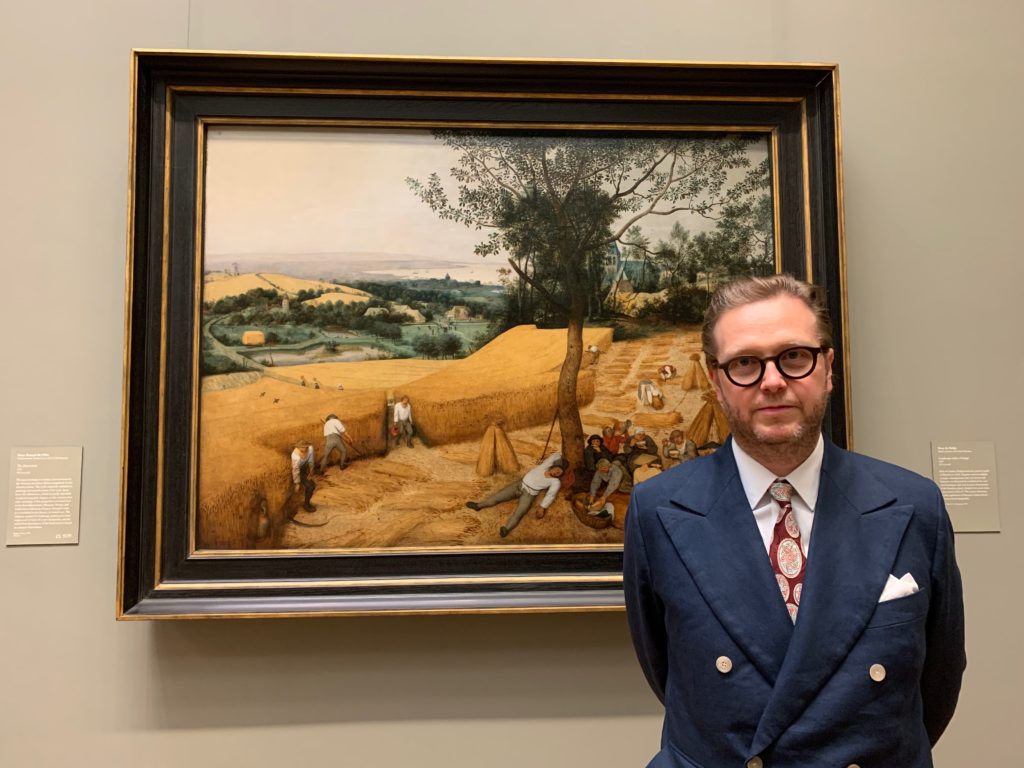
His latest show, now on view at the Met, is inspired by a work in its collection.

Sarah Cascone

Ragnar Kjartansson was stuck in traffic. It was the opening night of his Metropolitan Museum of Art solo show, “Death Is Elsewhere,” and the Icelandic artist had agreed to meet with artnet News before the press preview to visit some of his favorite works at the storied institution. But it was after 4 p.m. on a Friday, the streets were clogged, and it was going to take a while.
In the artist’s absence, I waited in the museum’s Robert Lehman Wing courtyard, which had been transformed into a darkened viewing chamber for Kjartansson’s seven-channel video installation. The work was making its world premiere as the first in a new series of contemporary “activations” at the Met.
This initiative, from director Max Hollein, will also include a presentation of sculptures by Wangechi Mutu on the 5th Avenue façade and monumental paintings by Kent Monkman in the Great Hall. But first up is Kjartansson, whose film was shot just after the summer solstice in the south of Iceland.
In the background of the film, just past lush fields, is Laki, a volcano that erupted violently in the 1780s and triggered a famine that killed around a quarter of the island’s human population. Throughout the 77-minute work, a melancholy love song is sung over and over, creating a soothing sensation, washing over the gallery and lulling viewers into a meditative trance.

Installation view of “Ragnar Kjartansson: Death is Elsewhere” at the Metropolitan Museum of Art. Courtesy of the Metropolitan Museum of Art, New York.
It was in that state that Kjartansson found me, transfixed by the elegiac music and the breathtaking landscape of Iceland.
I was afraid there would be no time to talk now that other journalists were arriving, but after a firm handshake, Kjartansson took off at a brisk pace, shooting up the stairs and down the hallway in search of three specific collection artworks that he wanted to show me. Later in the evening, in a public talk with exhibition curator Jennifer Farrell, Kjartansson cited performance artists who have influenced him (Carolee Schneemann, to whom the show is dedicated, Chris Burden, and Marina Abramovic), but our discussion tapped into more traditional facets of art history.

Lorenzo Bartolini, The Demidoff Table (1845). Photo courtesy of the Metropolitan Museum of Art.
“We should start at The Demidoff Table,” Kjartansson said, referring to a carved marble artwork by Lorenzo Bartolini from 1845. The sculpture is prominently placed in front of an elevator bank that offers access to the Met’s rooftop, but I had never given it a second thought. Yet for Kjartansson, it has been an inspiration not only for Death Is Elsewhere, but also for an earlier work.
“It’s not important in art history, I guess, but the circular, sculptural feel of it gave me the idea for a piece called Song,” he said. In that work, created at the Carnegie Museum of Art in Pittsburgh, three of Kjartansson’s nieces sat on a plush, round, blue platform and sang a song inspired by an Allen Ginsberg poem for six hours.

Ragnar Kjartansson, Song (2011). Photo courtesy of the artist and Luhring Augustine, and i8 Gallery, Reykjavik.
“Death Is Elsewhere is almost a negative version of Song,” Kjartansson explained. For the new work, he arranged seven cameras and 21 microphones in a circle (“we just built this techno Stonehenge and the talent just walked around it,” he told Farrell later in the evening), which allowed him to create a cycloramic display for the final presentation at the Met.
Yet despite this direct connection to a work from the museum’s collection, Kjartansson didn’t make Death Is Elsewhere with the Met in mind. When Farrell, an associate curator in the museum’s department of drawings and prints, arranged a studio visit with Kjartansson in 2018, he was already editing Death Is Elsewhere. The work’s score was composed with two sets of twins: the film’s performers, Gyða and Kristín Anna Valtýsdóttir, and Aaron and Bryce Dessner of the National. “The lyrics were just taken from poetry books in my living room,” the artist told me.
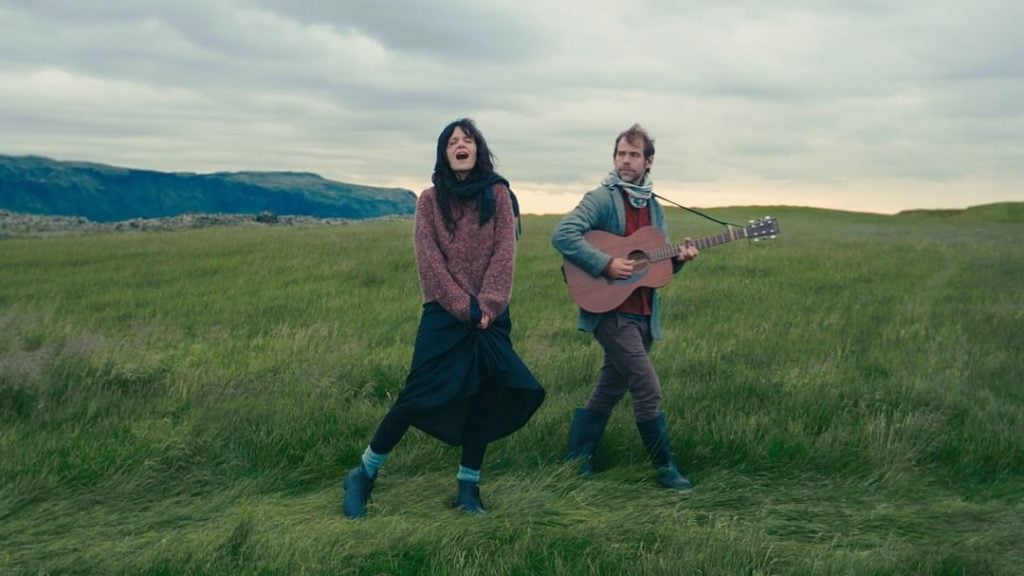
Ragnar Kjartansson, Death is Elsewhere (2019). ©Ragnar Kjartansson. Photo courtesy of the artist, Luhring Augustine, New York, and i8 Gallery, Reykjavik.
They filmed on three consecutive days, but the end product had to be a single take, capturing the sun’s setting and rising during the endless white night. “It’s this magic moment in the midsummer night when the birds sleep for like 40 minutes, and then they start again,” Kjartansson said, explaining that they timed the shoot to the bird song, ending when they resumed singing.
The artist still remembers his first visit to the Met, back in 2001, on his first trip to the United States. “I didn’t come here as a kid,” Kjartansson told me. “As an Icelander, it’s always great to come to art museums like this. Our country, we don’t have these objects. Our art history is all literature. And we’re not a colonial nation, so we couldn’t steal stuff from somewhere else. We don’t have anything.”
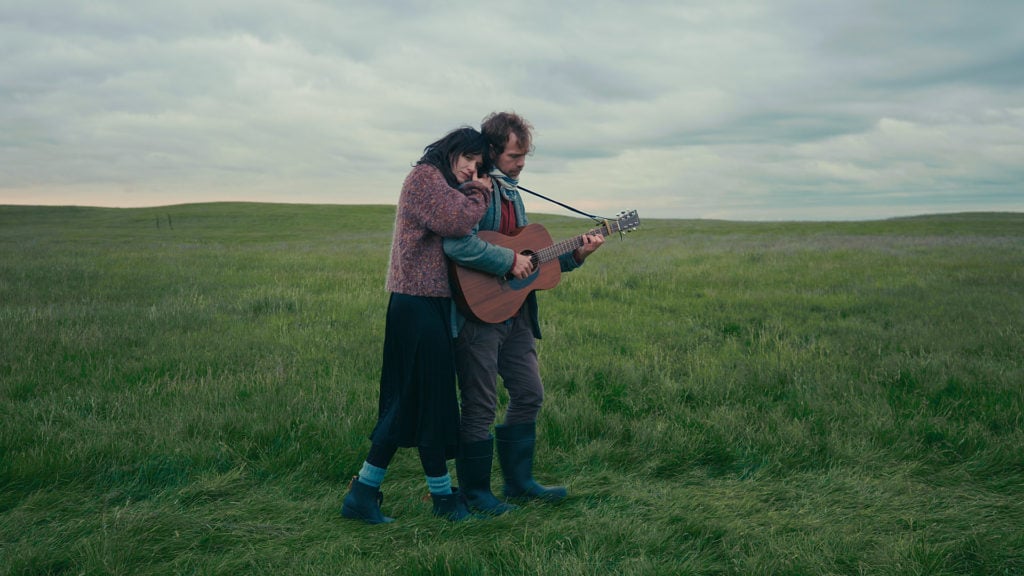
Ragnar Kjartansson, Death is Elsewhere (2019). ©Ragnar Kjartansson. Photo courtesy of the artist, Luhring Augustine, New York, and i8 Gallery, Reykjavik.
I considered my own trip to Iceland in 2016, and told Kjartansson that I enjoyed the contemporary art at the Reykjavík Art Museum, and the quirky Icelandic Phallological Museum. But in retrospect, there wasn’t what you might consider an encyclopedic museum, I told him.
“You went to the penis museum? That’s pretty encyclopedic,” he countered.
By this point, we were rushing to the American Wing in search of Robert Winthrop Chanler’s Porcupines, a painted screen on view in the open storage galleries. The museum was closing and security guards were ushering visitors out, but our press contact from the museum flashed her staff badge and we were allowed to stay.
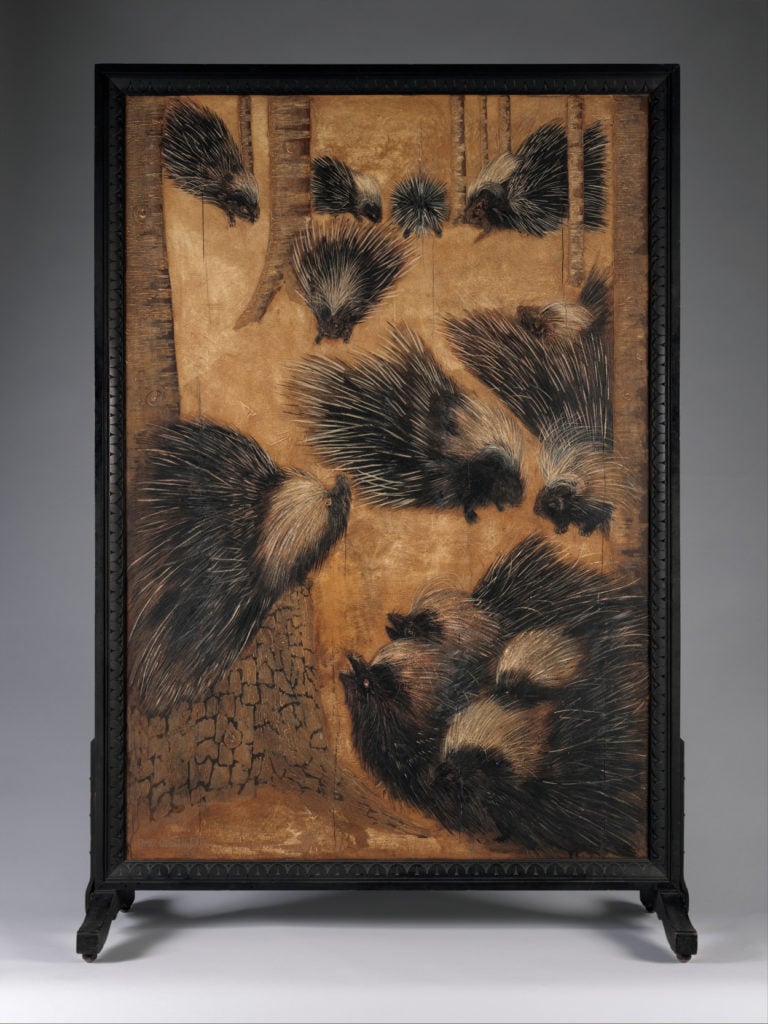
Robert Winthrop Chanler, Porcupines (1914). Photo courtesy of the Metropolitan Museum of Art, New York, gift of Mrs. John Jay Chapman, 1927.
“This is one of my favorite presentations. It’s literally [in] storage. It’s so not precious,” Kjartansson said as we hunted, and after about seven minutes, I heard a triumphant shout from several aisles over after he found the piece.
“This is Robert Chanler, who was a strange fellow. I learned about him when I filmed The Visitors in upstate New York,” Kjartansson explained. “He was one of the Astor orphans. Everyone in his family was a politician, but he became an artist. In his studio apartment in New York, he had these crazy dinner parties. His dinner table was a fish tank, which was pretty radical for the early 1920s. He did these decorative nature things, but he became a friend of Matisse and Picasso. I think he’s secretly important to American art history because he has this Naive-ist touch,” he added.
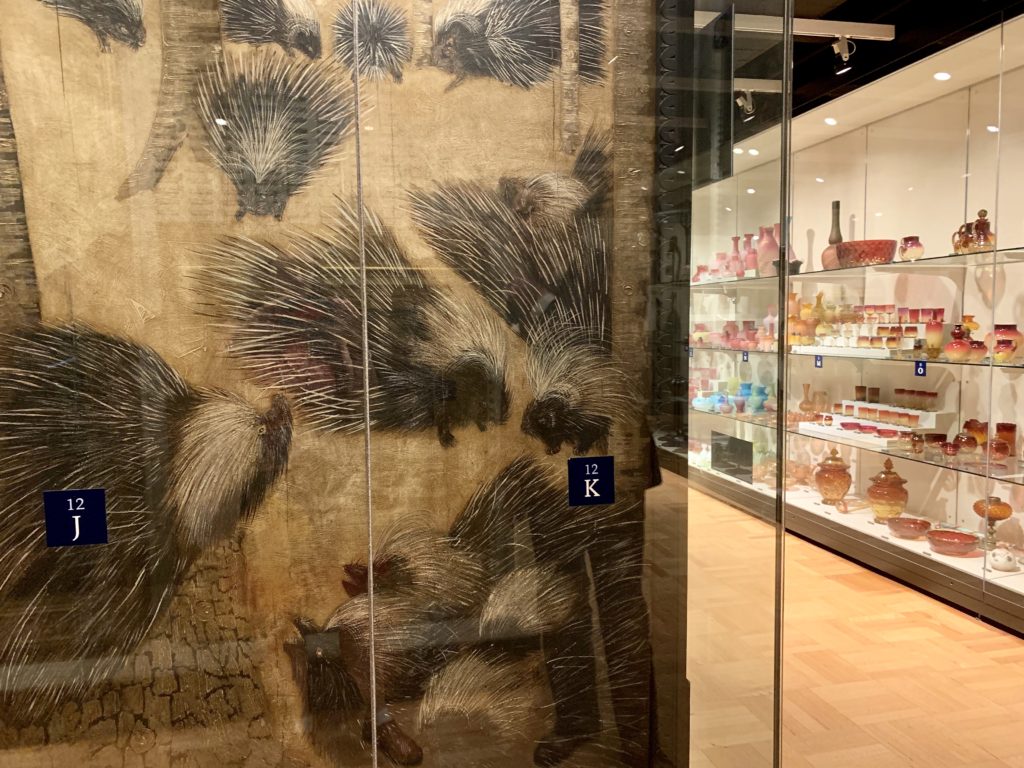
Robert Winthrop Chanler, Porcupines (1914) on view in open storage at the Metropolitan Museum of Art. Photo by Sarah Cascone.
For the third stop on our tour, Kjartansson selected one of the Met’s heavy hitters, leading me up the grand staircase to the Old Master paintings galleries. On his first trip to New York, Kjartansson asked a writer friend what he should see. The answer was simple: Pieter Bruegel the Elder’s The Harvesters (1565).
“It was really good advice to come here just for this painting, to come straight here and stay for one hour,” Kjartansson said. “Also, I had a very Socialist upbringing. My grandfather was always like ‘Bruegel was the real artist. He didn’t paint kings and queens. It’s real people.’ Which is true. It’s an amazing document of real life.”
“Ragnar Kjartansson: Death Is Elsewhere” is on view at the Metropolitan Museum of Art, Gallery 963, Robert Lehman Wing court, 1000 Fifth Avenue, New York, May 30–September 2, 2019.